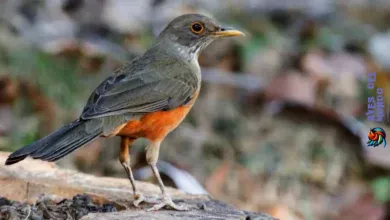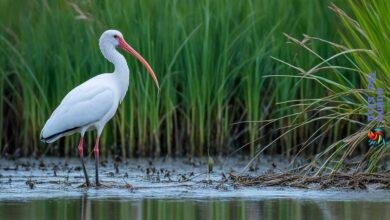Did you know that there are over 10,000 known species of birds worldwide? From vibrant hummingbirds to majestic raptors, these winged creatures captivate our attention with their beauty, grace, and diverse behaviors. If you’ve ever been curious about birdwatching, also known as birding, you’re in for a treat. This fascinating hobby allows you to immerse yourself in the world of avian wonders and connect with nature in a unique way. Whether you’re a beginner or a seasoned birder, this article will provide you with essential tips and techniques to enhance your bird identification skills and make the most of your birdwatching adventures.
Why Birdwatching?
Birdwatching, also known as birding, is a great skill and a fun hobby for anyone who is curious about nature and wants to learn more about the world around them. By observing birds, you become more perceptive of your surroundings, notice sounds you may have overlooked, and become more in tune with the passing of seasons. Birding can be a gateway to recognizing and appreciating the wider natural world.
If you’re new to birdwatching, you might wonder why people are so passionate about this activity. The truth is, birdwatching offers a multitude of benefits that go beyond the pleasure of spotting different species. By immersing yourself in the world of birds and their habitats, you embark on an exciting journey of discovery and understanding.
Connecting with Nature
Through birdwatching, you develop a deeper appreciation for the beauty and diversity of the natural world. As you observe birds in their natural habitats, you witness their extraordinary behaviors and interactions with their environment. From the vibrant colors of a cardinal to the intricate nesting behavior of a wren, each bird species has its own fascinating story to tell.
«Watching birds is not just an activity; it’s a way of connecting with nature and understanding our place within it.» – Jane Peterson, avid birder
A Peaceful and Meditative Experience
With its calming and serene atmosphere, birdwatching provides an opportunity to escape the hustle and bustle of daily life. Whether you’re strolling through a park or sitting quietly in your backyard, immersing yourself in birdwatching allows you to find solace in the tranquil world of birds.
Sharpening Your Senses
Birdwatching sharpens your senses and helps you become more attuned to the natural environment. You learn to recognize different bird calls, decipher their behavior, and identify distinct species by their shape, size, and color patterns. This heightened awareness extends beyond birds, enhancing your overall appreciation of nature.
Environmental Awareness and Conservation
Birdwatchers often become passionate advocates for bird conservation and environmental protection. Through birdwatching, you develop a greater understanding of the fragility of ecosystems and the impact of human activities on bird populations. This knowledge can transform your relationship with the natural world and motivate you to take action to preserve habitats and protect bird species.
So, whether you’re a beginner or an experienced birdwatcher, immerse yourself in the fascinating world of birding. Grab your binoculars, explore diverse habitats, and let the beauty and wonder of birds open your eyes to the marvels of nature.

Getting Started: Step Outside
The easiest way to start birdwatching is by stepping outside your back door or looking out of your window. Many bird species can be found in backyards, especially if you have bird feeders. Fill up the feeders with birdseed and observe how many different species show up. Providing a water source like a birdbath or fountain can attract even more birds to your yard.

Backyard birding is a convenient and enjoyable way to connect with nature without leaving the comfort of your home. Setting up bird feeders in your backyard can quickly transform your space into a bustling bird hub. Different bird species are attracted to different types of feeders and food, so it’s worth experimenting with different options to see what works best.
Here are some popular types of bird feeders:
- Hopper feeders: These feeders have a reservoir where birdseed is stored and are great for attracting a variety of bird species.
- Tube feeders: Tube-shaped feeders with multiple feeding ports are suitable for attracting smaller bird species like finches and chickadees.
- Suet feeders: Suet feeders hold blocks or cakes of nutrient-rich suet, which is especially appealing to woodpeckers and other insect-loving birds.
- Platform feeders: These flat feeders with raised edges can accommodate a wide range of birdseed and attract ground-feeding birds like doves and sparrows.
Once you have your bird feeders in place, it’s time to observe the avian visitors. Keep a notebook or use a birding app to record the different species you see. Take note of their colors, sizes, and unique characteristics to aid in identification.
«The sound of birdsong and the vibrant colors of birds can bring joy and a sense of wonder to any backyard. Birdwatching offers a unique opportunity to witness the beauty of nature up close and personal.»
Here are some common bird species you may encounter in your backyard:
| Bird Species | Size | Main Colors |
|---|---|---|
| American Robin | Medium | Brown, orange, gray |
| House Finch | Small | Red, brown, gray |
| Northern Cardinal | Medium | Red, black |
| Black-capped Chickadee | Small | Black, white |
| American Goldfinch | Small | Yellow, black |
These are just a few examples of the diverse bird species that you can attract to your backyard. By providing food and water, you create a welcoming environment that supports the local bird population and provides endless entertainment for birdwatching enthusiasts like yourself.
Get a Guide
A bird guide is an essential tool for every birdwatcher. Whether you’re a beginner or an experienced birder, having a guide can greatly enhance your bird identification skills. There are various options available, from printed field guides to mobile apps.
Printed field guides, such as «National Geographic’s Complete Birds of North America,» provide a comprehensive reference with detailed information about bird species. These guides often include illustrations, maps, and descriptions to help you identify and learn more about birds in your area.
«National Geographic’s Complete Birds of North America» offers a wealth of information on bird identification, behavior, and habitat. With over 1,000 species covered, this guide is a valuable resource for any birdwatcher.
If you’re interested in identifying common backyard birds, consider using the «Sibley Backyard Birding Flashcards.» These flashcards feature illustrations, key identification traits, and species descriptions specific to the birds you’re likely to encounter in your garden.
Recommended Guide:
| Guide | Description |
|---|---|
| «National Geographic’s Complete Birds of North America» | A comprehensive reference guide with detailed information on over 1,000 bird species. |
| «Sibley Backyard Birding Flashcards» | Flashcards specifically designed to help you identify common backyard bird species. |
In addition to printed guides, there are also mobile apps available for bird identification. One highly recommended app is «Merlin» by the Cornell Lab of Ornithology. This app provides a user-friendly interface and uses artificial intelligence to help you identify birds based on their appearance, behavior, and location.
Take your birding experience to the next level by using a bird guide that suits your preferences and needs. Whether you prefer the feel of a physical book in your hands or the convenience of a mobile app, a guide will be a valuable companion on your birdwatching adventures.
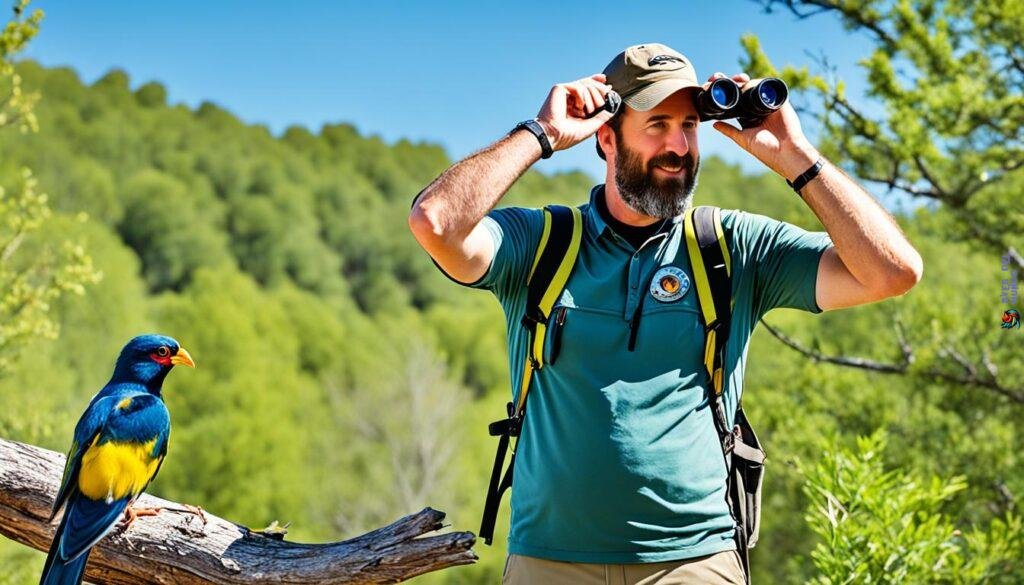
Invest in Binoculars
While not necessary, a good pair of birdwatching binoculars can greatly enhance your birding experience. Binoculars allow you to see birds up close and catch the finer details, even in challenging lighting conditions. When choosing binoculars, consider factors such as optics, magnification power, and durability. Look for binoculars in the $100 to $200 range that come with a good lifetime waterproof warranty.
Test the brightness and clarity of the binoculars by pointing them at a dark corner of a store. This will give you an idea of how well they perform in low-light situations, which can be crucial for birdwatching. Opt for binoculars with a wide field of view to help you locate and track birds more easily.
Here are some recommended options for birdwatching binoculars:
- Opticron Oregon – Known for its excellent image quality and durable construction.
- Celestron Nature DX ED – Offers high-definition images and is suitable for both beginners and advanced birders.
- Hawke Nature-Trek 8×42 – Provides bright, clear views with its high-quality optics.
Investing in a good pair of binoculars will not only enhance your birdwatching adventures but also allow you to appreciate the intricate beauty of birds in greater detail.

Seek Out Different Locations
Expand your birdwatching opportunities by venturing beyond your backyard and exploring different locations and habitats. By seeking out diverse birding locations, you’ll have the chance to encounter a wide range of bird species, each with its own unique characteristics and behaviors.
Every bird species has specific habitat preferences, so it’s essential to visit various environments to maximize your birding experience. Different bird species thrive in different habitats, such as forests, shrubs, streams, or open fields. Exploring these different habitats allows you to witness the incredible diversity of bird species that inhabit our world.
Even in urban environments, city parks can serve as excellent birding spots, acting as oases amidst the concrete jungle. These green spaces attract a surprising variety of bird species, making them perfect for birdwatching enthusiasts who may not have easy access to more expansive natural settings.
Remember, the more bird habitats you explore, the greater your chances of encountering a wider variety of birds. So, grab your binoculars, pack your bird guide, and set off on an adventure to discover the incredible diversity of bird species that awaits you.
Overview of Birding Locations and Habitats
| Habitat | Characteristics | Common Bird Species |
|---|---|---|
| Forests | Lush vegetation, tall trees, diverse plant life | Woodpeckers, Warblers, Thrushes |
| Wetlands | Marshes, swamps, ponds, water bodies | Heron, Egrets, Ducks, Geese |
| Grasslands | Open spaces, grassy plains, meadows | Sparrows, Larks, Falcons |
| Coastlines | Beaches, shores, cliffs, tidal zones | Gulls, Terns, Plovers, Sandpipers |
| Mountains | High altitudes, rugged terrain, alpine vegetation | Eagles, Hawks, Falcons |
| Urban Parks | Lush green spaces, trees, water features | Pigeons, Sparrows, Robins, Finches |

Connect With Local Birders
Enhance your birdwatching experience by connecting with local birding clubs and birdwatching groups. Engaging with fellow birders can open up a world of knowledge and opportunities to explore the avian wonders in your area. Birders are known for their passion and willingness to share information, making it a valuable resource for both beginners and experienced birdwatchers.
By joining a local birding club, you’ll gain access to a community of like-minded individuals who share your love for birds. These clubs often organize field trips, workshops, and other events where you can learn from experienced birders, improve your identification skills, and discover new birding hotspots. In addition to practical knowledge, club members can serve as mentors, providing guidance and support as you develop your birdwatching skills.
If joining a physical club isn’t feasible, consider connecting with birding communities on social media platforms. Online birdwatching groups allow you to interact with birders from around the world, exchange information, share sightings, and seek advice. These communities are often welcoming and inclusive, providing a virtual environment where you can connect with fellow bird enthusiasts and foster new friendships.
“Birding clubs and communities are invaluable resources for birdwatchers of all levels. Through these connections, you not only expand your knowledge and skills but also become part of a tight-knit community that celebrates the beauty of birds.”
– Jane Smith, avid birder and member of the XYZ Birding Club
Benefits of Connecting With Local Birders:
- Access to experienced birders who can assist with bird identification
- Opportunities to participate in field trips and birding events
- Discovering new birding hotspots and hidden gems in your area
- Sharing bird sightings and learning about rare or unique species
- Forming friendships and building a supportive network within the birding community
Connecting with local birders not only enriches your birdwatching experience but also contributes to the overall enjoyment and conservation of birds. By fostering a sense of community and sharing knowledge, birding clubs and communities play a crucial role in preserving and protecting avian species and their habitats.
Local Birding Clubs
| Club Name | Location | Contact Information |
|---|---|---|
| Birding Enthusiasts Society | City A | info@birdingenthusiastssociety.com |
| Nature Lovers Bird Club | City B | contact@natureloversbirdclub.com |
| Feathered Friends Association | City C | ffassociation@gmail.com |
| Wingspan Birding Club | City D | wingspanclub@outlook.com |
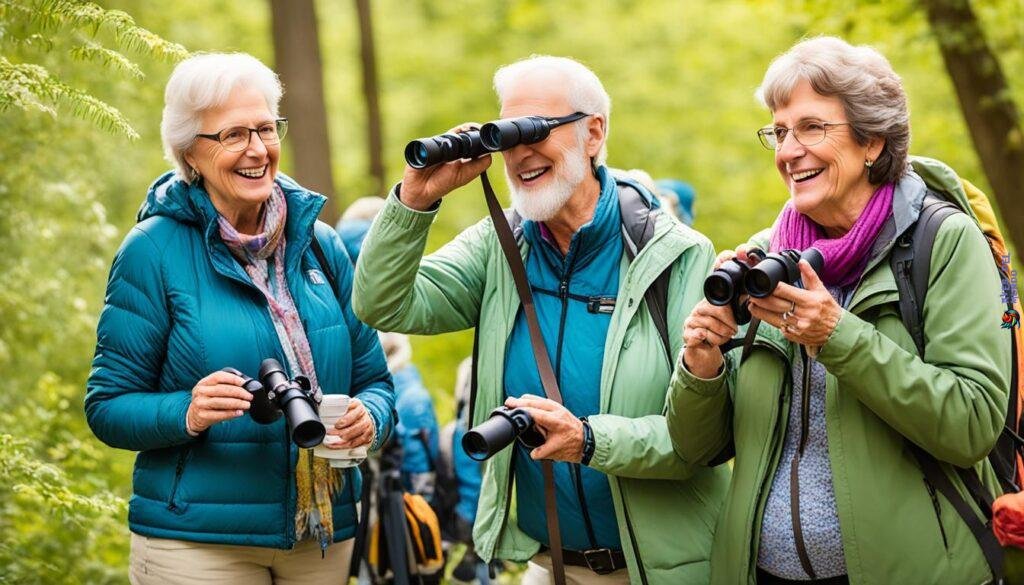
Become a Morning Person
To maximize your chances of spotting and identifying birds, consider heading out in the early morning. Birds are most active and vocal during the early hours when they are hungry and foraging. Avoid birdwatching during noon, as birds are least active at this time. The early morning hours offer the best opportunities to see and hear a wide variety of bird species.
Why Early Mornings?
The early mornings are a prime time for birdwatching due to the high level of bird activity. As the day begins, birds emerge from their roosting spots and start searching for food. Their hunger and foraging instincts make them more active and vocal, creating a fantastic opportunity for birdwatchers to observe and identify different species.
«The early bird catches the worm.» – Ancient Proverb
During the early hours, the atmosphere is often calm and tranquil, enhancing your overall birdwatching experience. The soft golden light of dawn provides excellent visibility and makes it easier to spot birds as they forage in trees, bushes, and open areas.
By venturing out in the early mornings, you’ll also encounter a greater variety of bird species compared to other times of the day. Many migratory birds are most active during the early morning hours, making it an ideal time to witness their stunning flights.
The Magic of Early Mornings
As the world around you slowly wakes up, from the gentle rustling of leaves to the melodic songs of birds, you’ll become immersed in the beauty of nature. The peaceful ambiance and the crisp air make for a serene birdwatching experience.
Additionally, early mornings often provide a quieter and less crowded birding environment. You’ll have a greater chance of spotting elusive species and observing their natural behavior undisturbed.
Dress Code for Early Morning Birdwatching
When heading out in the early morning for birdwatching, it’s essential to dress appropriately for the weather conditions. Layer your clothing to accommodate the morning chill, as temperatures may rise as the day progresses. Don’t forget to wear comfortable walking shoes and consider bringing a hat and sunscreen for added protection.
Remember, the early bird catches the best birdwatching opportunities. Set your alarm clock and embrace the rewards that the early morning hours hold for bird enthusiasts like yourself.

How to Bird
Birdwatching involves observing birds and utilizing different techniques to identify them. To enhance your bird identification skills, practice a four-step approach:
- Size and Shape: Pay attention to the overall size and shape of the bird. Note the size in relation to familiar objects and observe any distinctive physical features like beak length, wing shape, or tail length.
- Color Pattern: Examine the bird’s coloration and markings. Take note of patterns on the body, wings, and head. Look for specific colors, such as bright plumage or distinct markings.
- Behavior: Observe the bird’s behavior and patterns of movement. Note how it flies, feeds, hops, or walks on the ground. Pay attention to its feeding habits, vocalizations, or interactions with other birds.
- Habitat: Consider the bird’s preferred habitat and environment. Different bird species have specific habitat preferences, such as woodland, wetland, or open grassland. Take note of the location, vegetation, or surroundings where you spot the bird.
To improve your bird identification skills, familiarize yourself with common bird species in your area. Learn their characteristics, such as their typical size, shape, color patterns, behaviors, and preferred habitats. By studying and recognizing species you frequently encounter, you’ll be able to identify them more confidently.
Expand your knowledge and skills by observing birds in different locations, at different times of the day, and during different seasons. This exposure to a variety of bird species will help you develop a broader understanding of avian diversity and enable you to distinguish between similar-looking species.
Remember, birdwatching is a journey of continuous learning and discovery. The more you practice and refine your bird identification techniques, the more rewarding and fulfilling your birdwatching experiences will become.
Example of Bird Identification:
«I spotted a bird in my backyard that was about the size of a sparrow, but it had a longer tail and a sharp, pointed beak. Its body was mainly yellow, with a black cap on its head and black streaks on its wings. It was hopping around in the bushes and seemed to be searching for insects. Based on its size, shape, color pattern, and behavior, I identified it as a Common Yellowthroat, a frequent visitor to my area’s shrubby habitats.»

| Birdwatching Techniques | Bird Identification Skills |
|---|---|
| Observing size and shape | Recognizing color patterns |
| Noticing behavior and movement patterns | Understanding habitat preferences |
| Studying common bird species | Observing birds in different locations and seasons |
Find a Great Pair of Binoculars
When it comes to birdwatching, having a high-quality pair of binoculars is essential. Optics are the key to unlocking the intricate details of bird species and truly immersing yourself in the experience. Whether you’re a beginner or a seasoned birder, investing in the right binoculars can greatly enhance your birdwatching adventures.
Here are some top binocular models known for their excellent image quality and durability:
- Opticron Oregon
- Celestron Nature DX ED
- Hawke Nature-Trek 8×42
These binoculars provide clear and detailed views of birds, allowing you to appreciate the varying colors, plumage patterns, and behaviors up close. Consider factors like magnification power and objective lens size when selecting binoculars, as these will impact your field of view and light-gathering capabilities.
Remember, finding the right pair of binoculars is a personal choice, and it’s important to try them out before making a purchase. Visit a store where you can test different models and compare their performance to find the perfect fit for your birdwatching adventures.
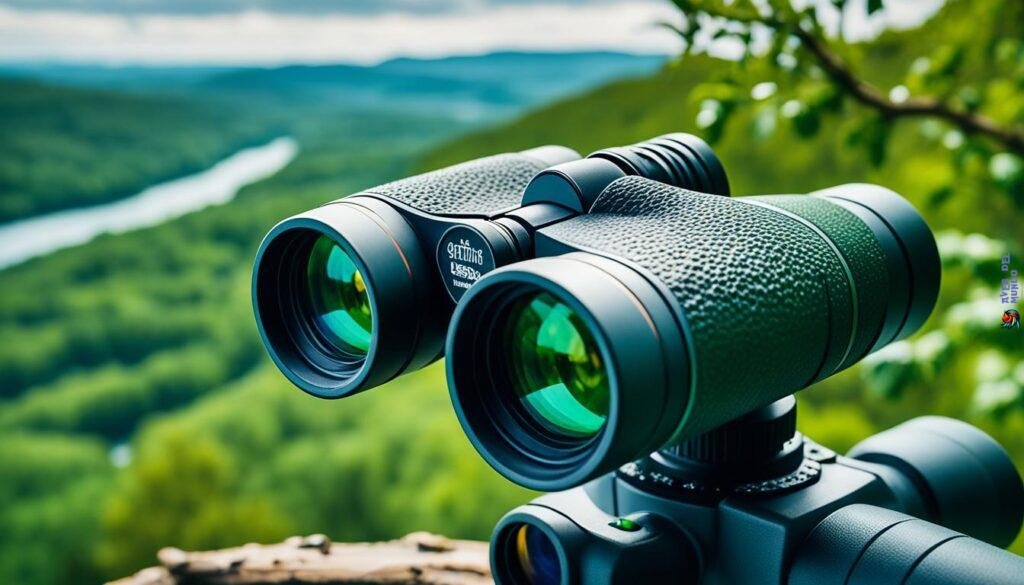
| Model | Features | Price Range |
|---|---|---|
| Opticron Oregon | Excellent image quality, durable construction | $300 – $400 |
| Celestron Nature DX ED | High-resolution optics, extra-low dispersion glass | $200 – $300 |
| Hawke Nature-Trek 8×42 | Phase-corrected prisms, waterproof and fog-proof | $150 – $200 |
Pack a Field Guide
A field guide is an indispensable tool for birdwatchers of all levels. It provides valuable information and serves as a reference for identifying different bird species. Investing in a guide that suits your needs and preferences will greatly enhance your bird identification skills and overall birding experience.
Popular Field Guide Choices
There are several popular field guides available, each offering unique features and comprehensive bird species information. Consider the following options:
- Sibley Guide
- Kaufman’s Guide
- Peterson’s Guide
- National Geographic Guide
These guides provide detailed illustrations, species descriptions, range maps, and helpful tips for bird identification. They are trusted resources in the birdwatching community and are widely used by birders worldwide.
In addition to printed field guides, there are also online resources and mobile apps that offer bird identification information and sounds. Websites such as All About Birds and mobile apps like Merlin Bird ID provide instant access to a wealth of bird species information, making it easier than ever to identify the birds you encounter.
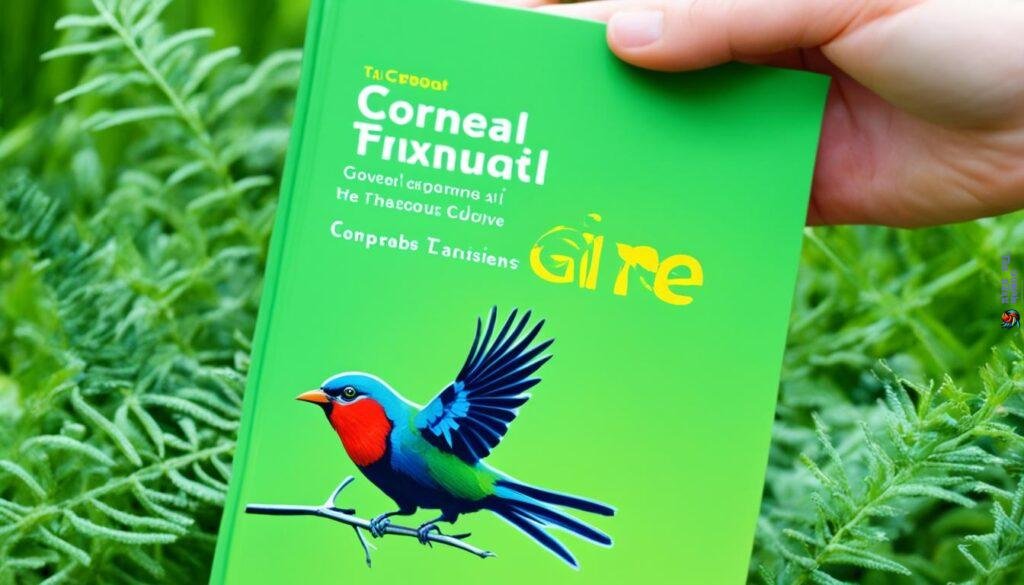
| Field Guide | Features |
|---|---|
| Sibley Guide | Comprehensive illustrations, species descriptions, and range maps |
| Kaufman’s Guide | Color-coded layout for quick reference and identification tips |
| Peterson’s Guide | Emphasis on field marks and helpful illustrations for bird identification |
| National Geographic Guide | Detailed photographs and user-friendly organization |
Consider a Camera
Photography can greatly enhance your birdwatching experience by allowing you to capture and document your bird sightings. Whether you’re a seasoned birdwatcher or just starting out, having a camera handy can help you create lasting memories and share your discoveries with others. Luckily, you don’t need expensive equipment to get started. A digital camera or even your smartphone can be used to photograph birds and create a visual record of the species you encounter.
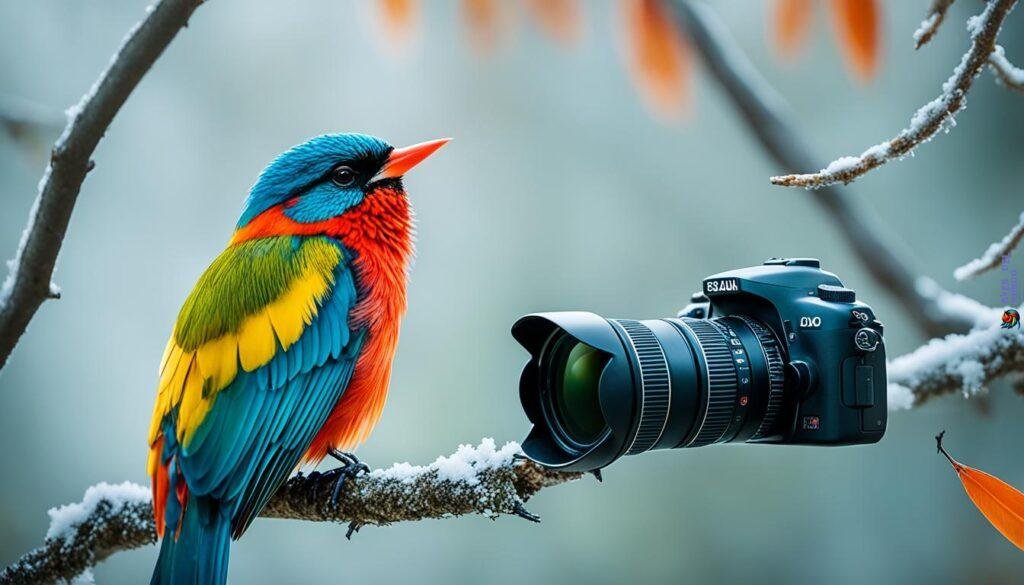
If you’re interested in taking more professional-looking bird photos, you might want to consider digiscoping. Digiscoping involves attaching a camera, such as a smartphone or a digital camera, to a spotting scope or a pair of binoculars. This technique allows you to capture detailed images of distant or elusive birds, bringing you closer to their beauty and behavior.
Benefits of Bird Photography
- Document bird species: Bird photography enables you to create a visual catalog of the different bird species you encounter, helping you track your observations and build a comprehensive record of your birdwatching experiences.
- Share your discoveries: By sharing your bird photos with others, you can contribute to scientific research and help fellow birdwatchers with bird identification. You can also inspire others to appreciate and protect these stunning creatures.
- Capture bird behavior: Photography allows you to freeze moments in time and immortalize unique behaviors and interactions that you may have witnessed. These images can tell stories and offer fascinating insights into the behavior and ecology of birds.
- Improve your bird identification skills: When you photograph birds, you pay close attention to their features and characteristics, which can help you enhance your bird identification skills. By studying your photos and comparing them with field guides, you’ll become more familiar with the subtle differences between species.
If you’re new to bird photography, don’t worry about capturing the perfect shot right away. Experiment with different camera settings, angles, and compositions. Practice patience and observation, and remember to respect the birds and their habitats while photographing them.
Remember, the ultimate goal of bird photography is to appreciate and document these magnificent creatures without causing them distress. Always prioritize the well-being of the birds and respect their natural environment.
Tips for Bird Photography
- Invest in a tripod: To minimize camera shake and ensure sharp images, consider using a tripod or a monopod. This will help you achieve stability, especially when capturing birds in flight or in low-light conditions.
- Use the appropriate lens: Depending on the type of bird photography you’re interested in, consider investing in a telephoto lens with a long focal length. This will allow you to capture detailed images of birds from a distance without disturbing them.
- Learn about bird behavior: Understanding the behavior of the birds you wish to photograph can greatly improve your chances of capturing unique moments. Research their feeding patterns, mating rituals, and preferred habitats to anticipate their movements and behaviors.
- Practice fieldcraft skills: Developing fieldcraft skills, such as camouflage techniques and silent movement, can help you get closer to your subjects without alarming them. This will enable you to capture more intimate and natural-looking photos.
| Camera Equipment | Recommended Brands |
|---|---|
| Digital Camera | Nikon, Canon, Sony |
| Smartphone | iPhone, Samsung, Google Pixel |
| Telephoto Lens | Nikon, Canon, Sigma, Tamron |
| Tripod/Monopod | Manfrotto, Vanguard, Sirui |
Practice Skills
Developing observation skills is crucial for bird identification. By honing your observation skills, you can become more adept at recognizing the unique characteristics of different bird species. This section will explore various techniques and resources to help you improve your birding abilities.
Four-Step Approach to Bird Identification:
When identifying birds, it’s helpful to follow a systematic approach. By considering their size and shape, color pattern, behavior, and habitat, you can gather important clues that will aid in accurate identification. Regular practice will strengthen your ability to apply these techniques effectively.
Size and Shape: Pay attention to the overall body size, body shape, and proportions of birds. Note characteristics such as the length of the wings, tail shape, and beak length. These details can provide valuable insights into a bird’s identity.
Color Pattern: Observe the colors and patterns on a bird’s feathers. Note the markings on the head, wings, back, chest, and belly. Pay attention to any distinct patterns, such as stripes, spots, or patches.
Behavior: Watch how birds move and interact with their environment. Note their flight patterns, feeding behaviors, vocalizations, and social interactions. Behavior can be a strong clue in determining the species.
Habitat: Consider the specific habitats where birds are commonly found. Different species have distinct preferences for particular environments, such as forests, wetlands, or open grasslands. Understanding a bird’s preferred habitat can narrow down your identification possibilities.
Utilizing Online Tutorials and Resources:
Take advantage of the numerous online tutorials and resources available to help you enhance your bird identification skills. These tutorials often provide step-by-step guidance and interactive exercises to promote active learning.
Many birding websites and organizations offer comprehensive tutorials, covering topics such as bird morphology, plumage variations, and common challenges in identification. These resources can deepen your knowledge and help you recognize subtle differences between similar bird species.
Birding Tutorials
| Tutorial Title | Website |
|---|---|
| Introduction to Bird Identification | Birding 101 |
| Birding by Ear: Recognizing Bird Songs and Calls | Birdsong Identification |
| Mastering Waterfowl Identification | Waterfowl ID |
| Advanced Birding Techniques | Birding Beyond Basics |
Remember, practice makes perfect. The more you actively engage in birding tutorials and exercises, the more confident you’ll become in identifying bird species based on their size, shape, color, behavior, and habitat.
Make Connections
Birding is not just an individual pursuit; it is a community that welcomes enthusiasts from all backgrounds. By connecting with other birders, you can cultivate a richer birdwatching experience. Joining local birding clubs and participating in birding events and walks provide opportunities to interact with fellow birders, share knowledge, and learn from experienced enthusiasts. This engagement allows you to discover new birding locations and uncover hidden gems within your region.
The birding community is known for its warm welcome and eagerness to assist beginners. Seasoned birders are always willing to offer guidance, share their passion for birds, and provide valuable insights into spotting elusive species. By making connections, you not only expand your knowledge and skills but also create lasting friendships based on a shared appreciation for avian wonders.
Birding events, in particular, offer a platform to meet like-minded individuals and take part in collective birdwatching experiences. These events feature guided walks, presentations by experts, and opportunities to share stories and sightings. Whether you’re a beginner or a seasoned birder, participating in these events is a fantastic way to celebrate your love for birds alongside a vibrant and supportive community.
